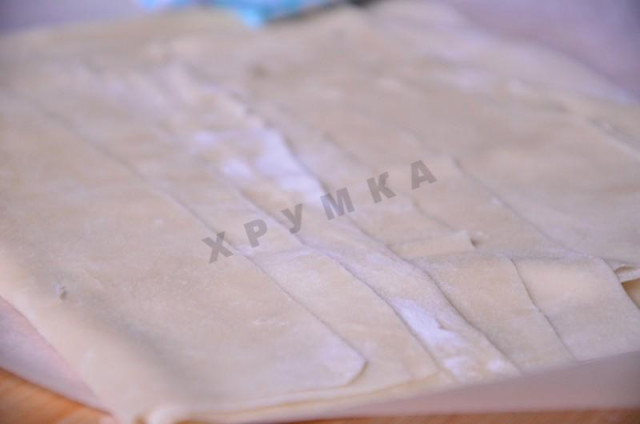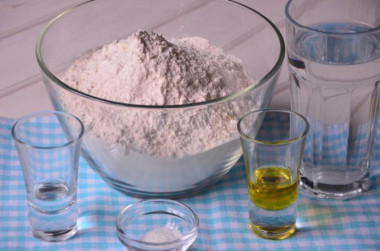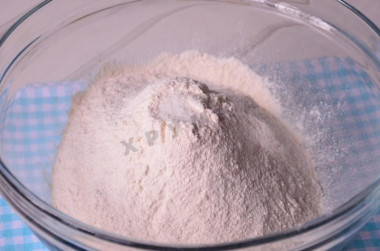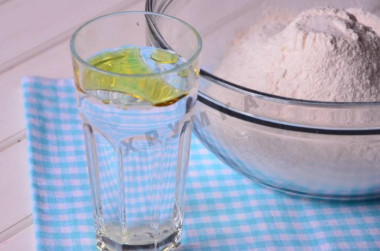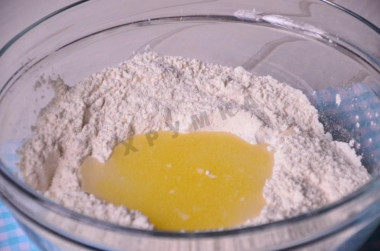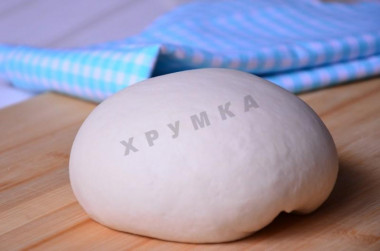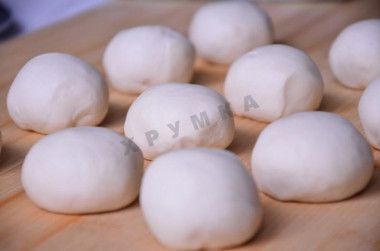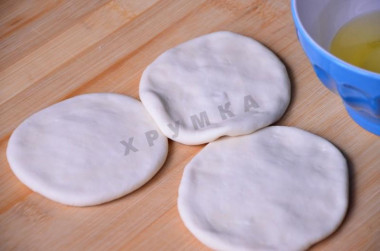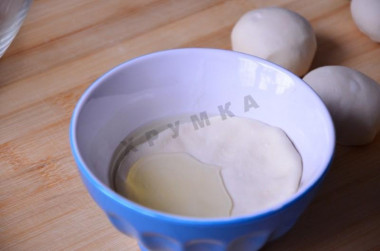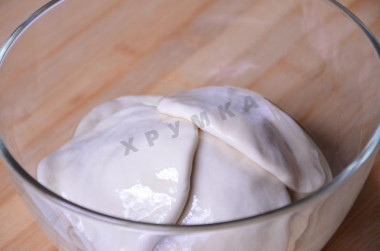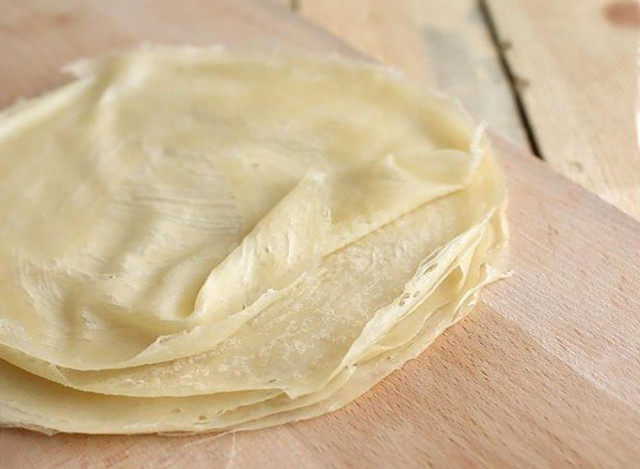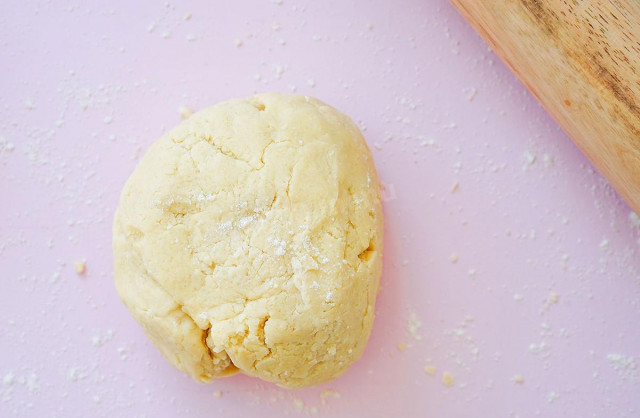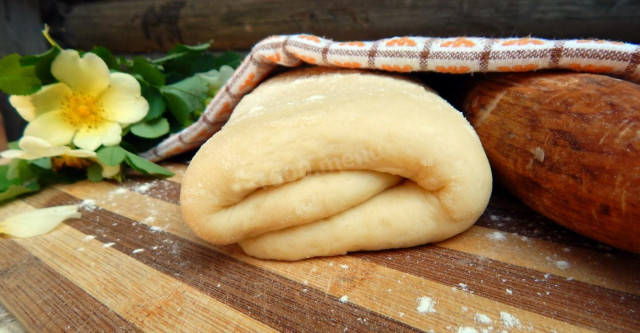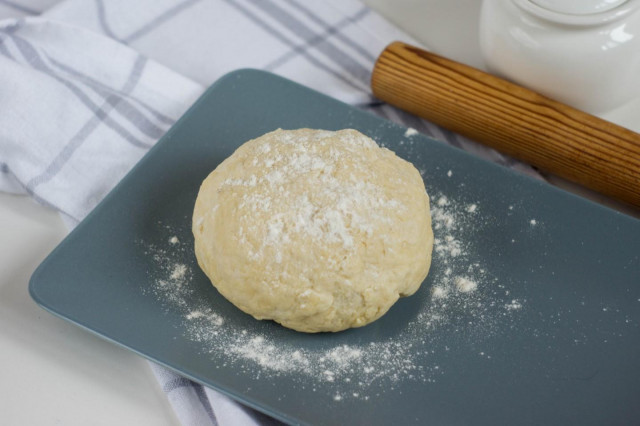Composition / ingredients
Step-by-step cooking
Step 1:
To prepare homemade filo dough, we will need the most common ingredients.
Step 2:
Sift flour into a deep bowl, add salt and mix thoroughly.
Step 3:
Mix water with 2 tbsp vegetable oil and 2 tsp vinegar.
Step 4:
Make a hole in the flour mixture, pour the liquid mixture into it and knead the dough. If suddenly the dough is too dense, add a little water.
Step 5:
Knead the dough until you get a smooth, soft and elastic bun. During kneading, the dough can be beaten off on the table.
Step 6:
Divide the finished dough into 12 equal parts.
Step 7:
Knead each part into a small cake.
Step 8:
Pour 0.5 tablespoons of vegetable oil into a deep dish. Dip each piece in butter and put it in a clean bowl.
Step 9:
Cover the bowl and leave the dough in this form for 1 hour.
Step 10:
After an hour, we take out the pieces of dough one by one and roll them out (or stretch them, as it will be convenient for you) to transparency, the thinner you will be able to roll out, the better. From the finished dough we bake pies, rolls or whatever your heart desires.
The process of preparing the dough is quite laborious, but the result is worth it. However, in order for the dough to get better, then practice is needed. You need to roll out the dough quickly enough, as it begins to dry out and become very brittle. If desired, you can not roll out the dough, but stretch it, then lightly lubricate your hands with vegetable oil and gently stretch the dough in different directions. This option did not suit me, but you can try it, maybe it will be easier for you.
And yet, maybe someone will be interested in storing this dough, I found this information, but I say right away that I didn't freeze this dough myself, but used it right away, so I don't know if the dough will change after defrosting.
If you are preparing such a dough for long-term storage, then put the rolled layer of dough on a sheet of baking paper, and cover it with a slightly damp towel on top so that the dough does not dry out. In general, while you are rolling out, you should get a stack of alternating layers of paper and sheets of dough, and the top layer is covered with a towel. When everything is rolled out, roll the stack into a roll (of course we remove the towel itself), tighten it with a film or hide it in a bag and put it in the freezer.
Caloric content of the products possible in the composition of the dish
- Whole durum wheat flour fortified - 333 kcal/100g
- Whole durum wheat flour, universal - 364 kcal/100g
- Flour krupchatka - 348 kcal/100g
- Flour - 325 kcal/100g
- Wine vinegar (3%) - 9 kcal/100g
- Vinegar 9% - 11 kcal/100g
- Balsamic vinegar - 88 kcal/100g
- Apple vinegar - 14 kcal/100g
- Vinegar - 11 kcal/100g
- Vegetable oil - 873 kcal/100g
- Salt - 0 kcal/100g
- Water - 0 kcal/100g

